Plenarists
 Daniel Frisbie (University of Minnesota, USA) is Distinguished McKnight University Professor and Head of Chemical Engineering and Materials Science at the University of Minnesota. He obtained a PhD in physical chemistry at MIT in 1993 and was an NSF Postdoctoral Fellow at Harvard. His research focuses on materials for printed electronics, including organic semiconductors and their applications in devices such as transistors and electrochromic displays. Research themes include the synthesis of novel organic semiconductors, structure-property relationships, organic device physics, and the application of scanning probe techniques. Recent efforts also include new manufacturing approaches for flexible electronics and the use of gel electrolytes as high capacitance gate insulators in OTFTs to lower drive voltages. From 2002-2014, Frisbie led a multi-investigator effort in Organic Optoelectronics at the University of Minnesota, sponsored by the Materials Research Science and Engineering Center (MRSEC) program of the NSF. He is currently the lead investigator on a Multi-University Research Initiative (MURI) grant funded by the Office of Naval Research for development of a roll-to-roll printed electronics manufacturing platform.
Daniel Frisbie (University of Minnesota, USA) is Distinguished McKnight University Professor and Head of Chemical Engineering and Materials Science at the University of Minnesota. He obtained a PhD in physical chemistry at MIT in 1993 and was an NSF Postdoctoral Fellow at Harvard. His research focuses on materials for printed electronics, including organic semiconductors and their applications in devices such as transistors and electrochromic displays. Research themes include the synthesis of novel organic semiconductors, structure-property relationships, organic device physics, and the application of scanning probe techniques. Recent efforts also include new manufacturing approaches for flexible electronics and the use of gel electrolytes as high capacitance gate insulators in OTFTs to lower drive voltages. From 2002-2014, Frisbie led a multi-investigator effort in Organic Optoelectronics at the University of Minnesota, sponsored by the Materials Research Science and Engineering Center (MRSEC) program of the NSF. He is currently the lead investigator on a Multi-University Research Initiative (MURI) grant funded by the Office of Naval Research for development of a roll-to-roll printed electronics manufacturing platform.
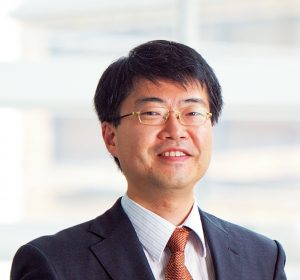 Takao Someya (University of Tokyo, Japan) received the Ph.D. degree in electrical engineering from the University of Tokyo in 1997. Since 2009, he has been a professor of Department of Electrical and Electronic Engineering, The University of Tokyo. From 2001 to 2003, he worked at the Nanocenter (NSEC) of Columbia University and Bell Labs, Lucent Technologies, as a Visiting Scholar. His current research interests include organic transistors, flexible electronics, plastic integrated circuits, large-area sensors, and plastic actuators. Prof. Someya has received a number of awards, a Japan Society for the Promotion of Science (JSPS) Prize, the 1st Prize of the newly established German Innovation Award, 2004 IEEE/ISSCC Sugano Award, and 2009 IEEE Paul Rappaport Award. He was a global scholar of Princeton University (2009-2012), a member of the board of directors of the U.S. Materials Research Society (2009-2011), and an IEEE/EDS Distinguished Lecturer since 2005. Prof. Someya’s “large-area sensor array” electronic thin film was featured in Time Magazine as one of its “Best Inventions of 2005” in its November 21st issue
Takao Someya (University of Tokyo, Japan) received the Ph.D. degree in electrical engineering from the University of Tokyo in 1997. Since 2009, he has been a professor of Department of Electrical and Electronic Engineering, The University of Tokyo. From 2001 to 2003, he worked at the Nanocenter (NSEC) of Columbia University and Bell Labs, Lucent Technologies, as a Visiting Scholar. His current research interests include organic transistors, flexible electronics, plastic integrated circuits, large-area sensors, and plastic actuators. Prof. Someya has received a number of awards, a Japan Society for the Promotion of Science (JSPS) Prize, the 1st Prize of the newly established German Innovation Award, 2004 IEEE/ISSCC Sugano Award, and 2009 IEEE Paul Rappaport Award. He was a global scholar of Princeton University (2009-2012), a member of the board of directors of the U.S. Materials Research Society (2009-2011), and an IEEE/EDS Distinguished Lecturer since 2005. Prof. Someya’s “large-area sensor array” electronic thin film was featured in Time Magazine as one of its “Best Inventions of 2005” in its November 21st issue
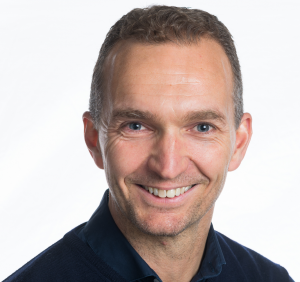 Magnus Berggren (Linkoping University, Sweden) received his MSc in Physics in 1991 and graduated as PhD (Thesis: Organic Light Emitting Diodes) in Applied Physics in 1996, both degrees from Linköping University. He then joined Bell Laboratories in Murray Hill, USA, for a one-year post doc period focusing on the development of organic lasers and novel optical resonator structures. In 1997, he teamed up with Opticom ASA, from Norway, and former colleagues of Linköping University to establish Thin Film Electronics AB. From 1997 to 1999 he served Thin Film as its founding managing director and initiated the development of printed electronic memories based on ferroelectric polymers. After this, he returned to Linköping University and to a part time manager position at Acreo Swedish ICT. In 1999, he initiated the research and development of paper electronics, in part supported by several paper- and packaging companies. Since 2002, he is the professor in Organic Electronics at Linköping University and the director of the Laboratory of Organic Electronics, today including around 60 researchers. Magnus Berggren is one of the pioneers of the Paper Electronics, Organic Bioelectronics and Electronic Plants research areas and currently he is the acting director of the Strategic Research Area (SFO) of Advanced Functional Materials (AFM) at LiU. He is also a co- founder of several companies, such as Invisense AB, DP Patterning AB, Ligna Energy AB and OBOE IPR AB. In 2012 Magnus Berggren was elected member of the Royal Swedish Academy of Sciences, in 2014 he received the Marcus Wallenberg Price and in 2016 he was awarded the IVA Gold Medal.
Magnus Berggren (Linkoping University, Sweden) received his MSc in Physics in 1991 and graduated as PhD (Thesis: Organic Light Emitting Diodes) in Applied Physics in 1996, both degrees from Linköping University. He then joined Bell Laboratories in Murray Hill, USA, for a one-year post doc period focusing on the development of organic lasers and novel optical resonator structures. In 1997, he teamed up with Opticom ASA, from Norway, and former colleagues of Linköping University to establish Thin Film Electronics AB. From 1997 to 1999 he served Thin Film as its founding managing director and initiated the development of printed electronic memories based on ferroelectric polymers. After this, he returned to Linköping University and to a part time manager position at Acreo Swedish ICT. In 1999, he initiated the research and development of paper electronics, in part supported by several paper- and packaging companies. Since 2002, he is the professor in Organic Electronics at Linköping University and the director of the Laboratory of Organic Electronics, today including around 60 researchers. Magnus Berggren is one of the pioneers of the Paper Electronics, Organic Bioelectronics and Electronic Plants research areas and currently he is the acting director of the Strategic Research Area (SFO) of Advanced Functional Materials (AFM) at LiU. He is also a co- founder of several companies, such as Invisense AB, DP Patterning AB, Ligna Energy AB and OBOE IPR AB. In 2012 Magnus Berggren was elected member of the Royal Swedish Academy of Sciences, in 2014 he received the Marcus Wallenberg Price and in 2016 he was awarded the IVA Gold Medal.
 Iain McCulloch (Imperial College London, UK) holds positions as Professor of Chemical Science within the Division of Physical Sciences and Engineering of KAUST, and a Chair in Polymer Materials within the Chemistry Department at Imperial College. He is also the Director of KAUST Solar Center, and a co-founder and director of Flexink Limited. Previously, he spent 18 years managing industrial research groups at Hoechst Corporation in the US and Merck in the UK, focussed on understanding the control of microstructure and energy levels in conjugated aromatic semiconducting molecules. He is co-inventor on over 60 patents and co-author on over 300 papers with a current h-index of 77. His papers have been cited over 24000 times, including three papers with over 1000 citations. He was cited in Thompson Reuters “Global Top 100 Materials Scientists, 2000-10, Ranked by Citation Impact” at number 35 globally and number 2 in the UK, and was listed on ISI Highly Cited Researchers List 2014, 2015 and 2016, based on ESI Highly Cited Papers 2002-2012. He was awarded the 2009 Royal Society of Chemistry, Creativity in Industry Prize, the 2014 Royal Society of Chemistry Tilden Prize for Advances in Chemistry and a 2014 Royal Society Wolfson Merit Award.
Iain McCulloch (Imperial College London, UK) holds positions as Professor of Chemical Science within the Division of Physical Sciences and Engineering of KAUST, and a Chair in Polymer Materials within the Chemistry Department at Imperial College. He is also the Director of KAUST Solar Center, and a co-founder and director of Flexink Limited. Previously, he spent 18 years managing industrial research groups at Hoechst Corporation in the US and Merck in the UK, focussed on understanding the control of microstructure and energy levels in conjugated aromatic semiconducting molecules. He is co-inventor on over 60 patents and co-author on over 300 papers with a current h-index of 77. His papers have been cited over 24000 times, including three papers with over 1000 citations. He was cited in Thompson Reuters “Global Top 100 Materials Scientists, 2000-10, Ranked by Citation Impact” at number 35 globally and number 2 in the UK, and was listed on ISI Highly Cited Researchers List 2014, 2015 and 2016, based on ESI Highly Cited Papers 2002-2012. He was awarded the 2009 Royal Society of Chemistry, Creativity in Industry Prize, the 2014 Royal Society of Chemistry Tilden Prize for Advances in Chemistry and a 2014 Royal Society Wolfson Merit Award.
Keynotes
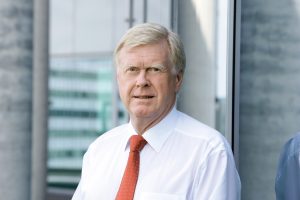 Wolfgang Knoll (Austrian Institute of Technology, Wien, Austria) graduated from the University of Konstanz in 1976 with a PhD degree in Biophysics after having completed a physics education at the Karlsruhe University of Technology. From 1980-1981 he was a visiting scientist at the IBM Research Laboratory in San Jose and the Institute Laue-Langevin in Grenoble, from 1981-1986 an Assistant Professor at the Technical University of Munich, and in 1986 he joined the Max Planck Institute for Polymer Research in Mainz, Germany, as a group leader. From 1991-1999 he was the Director of the Laboratory for Exotic Nanomaterials, hosted by the Institute of Physical and Chemical Research (RIKEN) in Wako/Japan. From 1993 to 2008 he was a Director at the Max Planck Institute for Polymer Research in Mainz, Germany. Since 2008 he has been the Scientific Managing Director at the AIT Austrian Institute of Technology, Vienna, Austria, and became a Visiting Professor at Nanyang Technological University in Singapore in 2010. He is a Member of the Austrian Academy of Sciences and holds an Honorary PhD degree from the University of Twente, the Netherlands. He has published more than 850 papers with 41000 citations which earned him an h-index of 105 (Goolge Scholar).
Wolfgang Knoll (Austrian Institute of Technology, Wien, Austria) graduated from the University of Konstanz in 1976 with a PhD degree in Biophysics after having completed a physics education at the Karlsruhe University of Technology. From 1980-1981 he was a visiting scientist at the IBM Research Laboratory in San Jose and the Institute Laue-Langevin in Grenoble, from 1981-1986 an Assistant Professor at the Technical University of Munich, and in 1986 he joined the Max Planck Institute for Polymer Research in Mainz, Germany, as a group leader. From 1991-1999 he was the Director of the Laboratory for Exotic Nanomaterials, hosted by the Institute of Physical and Chemical Research (RIKEN) in Wako/Japan. From 1993 to 2008 he was a Director at the Max Planck Institute for Polymer Research in Mainz, Germany. Since 2008 he has been the Scientific Managing Director at the AIT Austrian Institute of Technology, Vienna, Austria, and became a Visiting Professor at Nanyang Technological University in Singapore in 2010. He is a Member of the Austrian Academy of Sciences and holds an Honorary PhD degree from the University of Twente, the Netherlands. He has published more than 850 papers with 41000 citations which earned him an h-index of 105 (Goolge Scholar).
 Luisa Torsi (University of Bari, Italy) is full professor of Chemistry since 2005 and is the President of the European Material Research Society. She is the first women to hold this role. Torsi received her laurea degree in Physics from the University of Bari in 1989 and the PhD in Chemical Sciences from the same institution in 1993. She was post-doctoral fellow at Bell Labs from 1994 to 1996. In 2005 and 2006 she was invited professor at the University of Anger and Paris 7, respectively and is presently adjunct professor at the Abo Academy in Finland. In 2010 she has been awarded with the Heinrich Emanuel Merck prize for analytical sciences, this marking the first time the prestigious award is given to a woman. She is also the recipient of the 2013 “Best Italian Inventor Women” prize of the Italian Women Inventors & Innovators Network (IT–WIIN). She has been also elected 2017 Fellow of the Material Research Society for pioneering work in the field of organic (bio) electronic sensors and their use for point-of-care testing. Prof. Torsi had been serving extensively as expert reviewer for the European Commission being for three years the Chair of the Chemistry Panel for the evaluation of the Marie Curie Research Fellowships. In 2014 she has been appointed member of the H2020 Program Committee by the Italian Minister for Education and Research and is still serving in this role. Her principal scientific contributions are in the fields of advanced materials and electronic devices mostly employed for sensing applications. Recently she co-investigated interfacial electronic effects in functional biological systems integrated into organic field-effect transistors (OFETs). Torsi has authored ca. 170 ISI papers, and is co-inventor of several international awarded patents. Her works gathered almost 9000 Google scholar citations resulting in an h-index of 45. She has given more than 160 invited lectures, including almost 20 plenary and key notes contributions to international conferences. She is presently the coordinator of a “European Industrial Doctorate” Marie Curie project in collaboration with Merck and is principal investigator in a Marie Curie ITN. She has also coordinated a Marie Curie ITN European network, several national PRIN projects and was principal investigator in an ICT STREP proposal.
Luisa Torsi (University of Bari, Italy) is full professor of Chemistry since 2005 and is the President of the European Material Research Society. She is the first women to hold this role. Torsi received her laurea degree in Physics from the University of Bari in 1989 and the PhD in Chemical Sciences from the same institution in 1993. She was post-doctoral fellow at Bell Labs from 1994 to 1996. In 2005 and 2006 she was invited professor at the University of Anger and Paris 7, respectively and is presently adjunct professor at the Abo Academy in Finland. In 2010 she has been awarded with the Heinrich Emanuel Merck prize for analytical sciences, this marking the first time the prestigious award is given to a woman. She is also the recipient of the 2013 “Best Italian Inventor Women” prize of the Italian Women Inventors & Innovators Network (IT–WIIN). She has been also elected 2017 Fellow of the Material Research Society for pioneering work in the field of organic (bio) electronic sensors and their use for point-of-care testing. Prof. Torsi had been serving extensively as expert reviewer for the European Commission being for three years the Chair of the Chemistry Panel for the evaluation of the Marie Curie Research Fellowships. In 2014 she has been appointed member of the H2020 Program Committee by the Italian Minister for Education and Research and is still serving in this role. Her principal scientific contributions are in the fields of advanced materials and electronic devices mostly employed for sensing applications. Recently she co-investigated interfacial electronic effects in functional biological systems integrated into organic field-effect transistors (OFETs). Torsi has authored ca. 170 ISI papers, and is co-inventor of several international awarded patents. Her works gathered almost 9000 Google scholar citations resulting in an h-index of 45. She has given more than 160 invited lectures, including almost 20 plenary and key notes contributions to international conferences. She is presently the coordinator of a “European Industrial Doctorate” Marie Curie project in collaboration with Merck and is principal investigator in a Marie Curie ITN. She has also coordinated a Marie Curie ITN European network, several national PRIN projects and was principal investigator in an ICT STREP proposal.
 Natalie Stingelin (Imperial College London, UK) is a Full Professor of Organic Functional Materials at the Georgia Institute of Technology, with prior positions at Imperial College London; the Cavendish Laboratory, University of Cambridge; the Philips Research Laboratories, Eindhoven; and ETH Zürich. She was an External Senior Fellow at the Freiburg Institute for Advanced Studies and is Associate Editor of the RSC journal ‘Journal of Materials Chemistry C’. She was awarded the Institute of Materials, Minerals & Mining’s Rosenhain Medal and Prize (2014) and the Chinese Academy of Sciences (CAS) President’s International Fellowship Initiative (PIFI) Award for Visiting Scientists (2015); she was the Chair of the 2016 Gordon Conference on ‘Electronic Processes in Organic Materials’ as well as the Zing conference on ‘Organic Semiconductors’. She has published >160 papers and 6 issued patents. Her research interests encompass organic electronics & photonics, bioelectronics, physical chemistry of organic functional materials, and smart inorganic/organic hybrid systems.
Natalie Stingelin (Imperial College London, UK) is a Full Professor of Organic Functional Materials at the Georgia Institute of Technology, with prior positions at Imperial College London; the Cavendish Laboratory, University of Cambridge; the Philips Research Laboratories, Eindhoven; and ETH Zürich. She was an External Senior Fellow at the Freiburg Institute for Advanced Studies and is Associate Editor of the RSC journal ‘Journal of Materials Chemistry C’. She was awarded the Institute of Materials, Minerals & Mining’s Rosenhain Medal and Prize (2014) and the Chinese Academy of Sciences (CAS) President’s International Fellowship Initiative (PIFI) Award for Visiting Scientists (2015); she was the Chair of the 2016 Gordon Conference on ‘Electronic Processes in Organic Materials’ as well as the Zing conference on ‘Organic Semiconductors’. She has published >160 papers and 6 issued patents. Her research interests encompass organic electronics & photonics, bioelectronics, physical chemistry of organic functional materials, and smart inorganic/organic hybrid systems.
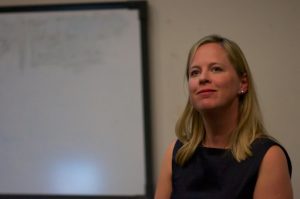 Róisín M. Owens (Centre Microélectronique de Provence, Gardanne, France) is Professor and head of the Department of Bioelectronics at the Centre Microélectronique de Provence. She received her BA in Biochemistry at Trinity College Dublin, and her PhD in Biochemistry and Molecular Biology at Southampton University. In her early postdoc work she specialized on biochemical aspects of infectious diseases, including enteric pathogens and tuberculosis, but then moved into novel therapeutics (for rhinovirus) using protein engineering and development of new technologies for pathogen detection. A continued interest in novel engineering technologies for biological applications led her to the field of organic bioelectronics. Her current research centers on integration of electroactive materials with biological systems, with a specific interest in 3D models of human tissues in vitro. She has received several awards including the European Research Council starting (2011), proof of concept (2014) and consolidator grants (2016), a Marie Curie fellowship, and an EMBO fellowship. In 2014, she became principle editor for biomaterials for MRS communications (Cambridge University Press), and she serves on the advisory board of Journal of Applied Polymer Science and Advanced Biosystems (Wiley).
Róisín M. Owens (Centre Microélectronique de Provence, Gardanne, France) is Professor and head of the Department of Bioelectronics at the Centre Microélectronique de Provence. She received her BA in Biochemistry at Trinity College Dublin, and her PhD in Biochemistry and Molecular Biology at Southampton University. In her early postdoc work she specialized on biochemical aspects of infectious diseases, including enteric pathogens and tuberculosis, but then moved into novel therapeutics (for rhinovirus) using protein engineering and development of new technologies for pathogen detection. A continued interest in novel engineering technologies for biological applications led her to the field of organic bioelectronics. Her current research centers on integration of electroactive materials with biological systems, with a specific interest in 3D models of human tissues in vitro. She has received several awards including the European Research Council starting (2011), proof of concept (2014) and consolidator grants (2016), a Marie Curie fellowship, and an EMBO fellowship. In 2014, she became principle editor for biomaterials for MRS communications (Cambridge University Press), and she serves on the advisory board of Journal of Applied Polymer Science and Advanced Biosystems (Wiley).
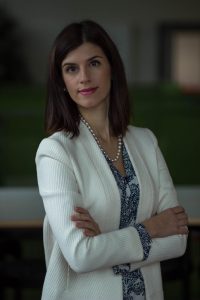 Eleni Stavrinidrou (Linkoping University, Sweden) received her BSc in Physics in 2008 from Aristotle University of Thessaloniki (Greece) and then her MSc in Nanotechnology from the same university, in 2010. She then joined the Department of Bioelectronics of Ecole Nationale Supérieure des Mines de Saint-Étienne (France) where she completed her PhD on Organic Bioelectronics in 2013. Her work there focused on understanding and engineering ion transport in conducting polymers. Eleni then joined the Laboratory of Organic Electronics (LOE) of Linköping University as a Postdoctoral Fellow where she developed organic electronic devices integrated within living plants. Her work introduced the concept of Electronic Plants. In 2016 she received a Marie Skłodowska-Curie Fellowship and since 2017 she is the group leader of the Electronic Plants (e-Plants) subgroup of LOE. Her research interests focus on electronic interface with plants for energy applications, plant control, hybrid systems and electronic materials-plant tissue interaction.
Eleni Stavrinidrou (Linkoping University, Sweden) received her BSc in Physics in 2008 from Aristotle University of Thessaloniki (Greece) and then her MSc in Nanotechnology from the same university, in 2010. She then joined the Department of Bioelectronics of Ecole Nationale Supérieure des Mines de Saint-Étienne (France) where she completed her PhD on Organic Bioelectronics in 2013. Her work there focused on understanding and engineering ion transport in conducting polymers. Eleni then joined the Laboratory of Organic Electronics (LOE) of Linköping University as a Postdoctoral Fellow where she developed organic electronic devices integrated within living plants. Her work introduced the concept of Electronic Plants. In 2016 she received a Marie Skłodowska-Curie Fellowship and since 2017 she is the group leader of the Electronic Plants (e-Plants) subgroup of LOE. Her research interests focus on electronic interface with plants for energy applications, plant control, hybrid systems and electronic materials-plant tissue interaction.
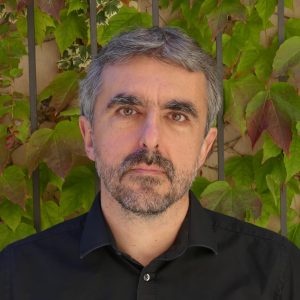 Eloi Ramon (Autonomous University of Barcelona, Spain) graduated in Telecom Engineering from the Polytechnic University of Catalonia (UPC), holds a Master in Micro- and Nanoelectronics Engineering and a PhD on inkjet printed devices and circuits from the Autonomous University of Barcelona (UAB). Since 1999, he is an Associate Professor at the Electronic Dept. (UAB) where he is teaching Telecom and CS BsC and MA. In 2014 he joined IMB-CNM as Printed Microelectronics researcher & group leader of Printed Electronics R&D line. His work is focused in the area of printed & organic devices for electronic systems, radiofrequency and biomedical applications, with large focus on the application of inkjet printing technologies for functional devices manufacturing. He has participated in more than 55 industrial and research projects, being co-author of more than 40 papers and 50 conference presentations and serving as a reviewer and scientific expert for different journals and public funding agencies.
Eloi Ramon (Autonomous University of Barcelona, Spain) graduated in Telecom Engineering from the Polytechnic University of Catalonia (UPC), holds a Master in Micro- and Nanoelectronics Engineering and a PhD on inkjet printed devices and circuits from the Autonomous University of Barcelona (UAB). Since 1999, he is an Associate Professor at the Electronic Dept. (UAB) where he is teaching Telecom and CS BsC and MA. In 2014 he joined IMB-CNM as Printed Microelectronics researcher & group leader of Printed Electronics R&D line. His work is focused in the area of printed & organic devices for electronic systems, radiofrequency and biomedical applications, with large focus on the application of inkjet printing technologies for functional devices manufacturing. He has participated in more than 55 industrial and research projects, being co-author of more than 40 papers and 50 conference presentations and serving as a reviewer and scientific expert for different journals and public funding agencies.
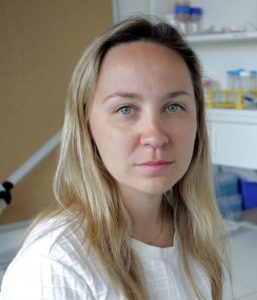 Esma Ismailova (Ecole Nationale Supérieure des Mines, France) is an Associate Professor in the Bioelectronics department at the Centre Microelectronics of Provence, in France. She completed her PhD in Chemistry and Chemical Physics, working on the synthesis and characterization of polymers and their application in microelectronics. She then joined the Laboratory for Organic Electronics at Cornell University, NY, USA as a postdoctoral researcher, where she worked on understanding of the interface between biology and electronics. She joined the Bioelectronics department as a postdoctoral researcher in 2010 where she worked on developing microfabrication platforms for soft biocompatible neural implants and advanced to becoming a permanent staff member in 2012. Her research interests focus on the design and fabrication of novel organic electronic devices for integration in healthcare. She is leading the electronic textiles research group. She has been the lead organizer of the Electronic Textiles Symposium for the Materials Research Society in USA (2016, 2018) and Europe (2017).
Esma Ismailova (Ecole Nationale Supérieure des Mines, France) is an Associate Professor in the Bioelectronics department at the Centre Microelectronics of Provence, in France. She completed her PhD in Chemistry and Chemical Physics, working on the synthesis and characterization of polymers and their application in microelectronics. She then joined the Laboratory for Organic Electronics at Cornell University, NY, USA as a postdoctoral researcher, where she worked on understanding of the interface between biology and electronics. She joined the Bioelectronics department as a postdoctoral researcher in 2010 where she worked on developing microfabrication platforms for soft biocompatible neural implants and advanced to becoming a permanent staff member in 2012. Her research interests focus on the design and fabrication of novel organic electronic devices for integration in healthcare. She is leading the electronic textiles research group. She has been the lead organizer of the Electronic Textiles Symposium for the Materials Research Society in USA (2016, 2018) and Europe (2017).
 Guglielmo Lanzani (Politecnico di Milano, Italy) is a Full Professor of Physics at the Department of Physics (Politecnico di Milano) from 2011. Since 2009, he is coordinator of Center for Nano Science Technology (CNST) of the Istituto Italiano di Tecnologia (IIT). He graduated in Solid State Physics at University of Milan in 1987 and received his PhD in Chemical Physics at University of Genova in 1991. After a post doc at CNR in Bologna, he was Teaching Assistant at the Istituto di Matematica e Fisica of the Università di Sassari for five years (1994-1999). From 1999 to 2011 he was Associate Professor at the Department of Physics of Politecnico di Milano. GL research activity regards the science and technology of nanostructured and molecular materials (organic semiconductors, carbon nanotubes and semiconductor nanocrystals). The main areas of experimental work are photophysics, optoelectronics and photonics, for application in energy, neuroscience and medicine. The activity is documented by more than 260 papers in international journals, it was presented in 160 invited talks at international conferences and resulted into five patents. He is author of the book “The Photophysics behind Photovoltaics and Photonics” for Wiley-VCH and he is currently involved in teaching basic physics and advanced courses at the engineering school of Politecnico di Milano.
Guglielmo Lanzani (Politecnico di Milano, Italy) is a Full Professor of Physics at the Department of Physics (Politecnico di Milano) from 2011. Since 2009, he is coordinator of Center for Nano Science Technology (CNST) of the Istituto Italiano di Tecnologia (IIT). He graduated in Solid State Physics at University of Milan in 1987 and received his PhD in Chemical Physics at University of Genova in 1991. After a post doc at CNR in Bologna, he was Teaching Assistant at the Istituto di Matematica e Fisica of the Università di Sassari for five years (1994-1999). From 1999 to 2011 he was Associate Professor at the Department of Physics of Politecnico di Milano. GL research activity regards the science and technology of nanostructured and molecular materials (organic semiconductors, carbon nanotubes and semiconductor nanocrystals). The main areas of experimental work are photophysics, optoelectronics and photonics, for application in energy, neuroscience and medicine. The activity is documented by more than 260 papers in international journals, it was presented in 160 invited talks at international conferences and resulted into five patents. He is author of the book “The Photophysics behind Photovoltaics and Photonics” for Wiley-VCH and he is currently involved in teaching basic physics and advanced courses at the engineering school of Politecnico di Milano.
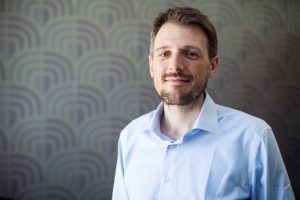 Mario Caironi (Istituto Italiano di Tecnologia – IIT, Milan, Italy) is a Tenure Track Researcher at the Center for Nano Science and Technology of the Istituto Italiano di Tecnologia (Milan, Italy). He obtained his Ph.D. cum laude in 2007 at Politecnico di Milano and then joined Prof. H. Sirringhaus’ group at the Cavendish Laboratory (Cambridge, UK) to work on printed, downscaled organic electronics, and on charge injection and transport in high mobility polymers. He moved to IIT in 2010 as a Team Leader, and was recipient of a Career Integration Grant Marie-Curie project to work on Inkjet-Printed organic Photodetectors for Imaging Applications. He has entered Tenure Track in 2014 at the same institution and he is an ERC 2014 grantee. His current activities comprise high-frequency printed organic and hybrid electronics, direct-writing processes for organic opto-electronics, organic thermoelectrics and bio-compatible electronics.
Mario Caironi (Istituto Italiano di Tecnologia – IIT, Milan, Italy) is a Tenure Track Researcher at the Center for Nano Science and Technology of the Istituto Italiano di Tecnologia (Milan, Italy). He obtained his Ph.D. cum laude in 2007 at Politecnico di Milano and then joined Prof. H. Sirringhaus’ group at the Cavendish Laboratory (Cambridge, UK) to work on printed, downscaled organic electronics, and on charge injection and transport in high mobility polymers. He moved to IIT in 2010 as a Team Leader, and was recipient of a Career Integration Grant Marie-Curie project to work on Inkjet-Printed organic Photodetectors for Imaging Applications. He has entered Tenure Track in 2014 at the same institution and he is an ERC 2014 grantee. His current activities comprise high-frequency printed organic and hybrid electronics, direct-writing processes for organic opto-electronics, organic thermoelectrics and bio-compatible electronics.
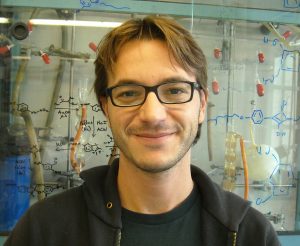 Luca Beverina (Unviersity of Milan, Italy) is Associate Professor of Organic Chemistry at the Department of Materials Science of the University of Milano-Bicocca. He graduated in Materials Science at the University of Milano-Bicocca in 1999 and received hid PhD in Materials Science at the same university in 2002. From 2002 to 2004 he was recipient of a Post-Doc fellowship of the Fondazione Marco Tronchetti Provera during which time he joined the group of Prof. Seth R. Marder at the Georgia Institute of Technology of Atlanta (Georgia, USA). From 2004 to 2012 he was Assistant Professor at the university of Milano-Bicocca, later to become Associate Professor at the same university. LB research activity is focused on the sesing ans synthesis of molecular and polymeric organic semiconductors for applications ranging from bioimaging and photodynamic therapy to plastic electronics. The activity is documented by over 100 papers on peer reviewed international journals as well as 5 international patens. He is also author of book chapters and reviews. He is currently teaching chemistry of organic semiconductors and formulation chemistry to both chemistry on materials science students.
Luca Beverina (Unviersity of Milan, Italy) is Associate Professor of Organic Chemistry at the Department of Materials Science of the University of Milano-Bicocca. He graduated in Materials Science at the University of Milano-Bicocca in 1999 and received hid PhD in Materials Science at the same university in 2002. From 2002 to 2004 he was recipient of a Post-Doc fellowship of the Fondazione Marco Tronchetti Provera during which time he joined the group of Prof. Seth R. Marder at the Georgia Institute of Technology of Atlanta (Georgia, USA). From 2004 to 2012 he was Assistant Professor at the university of Milano-Bicocca, later to become Associate Professor at the same university. LB research activity is focused on the sesing ans synthesis of molecular and polymeric organic semiconductors for applications ranging from bioimaging and photodynamic therapy to plastic electronics. The activity is documented by over 100 papers on peer reviewed international journals as well as 5 international patens. He is also author of book chapters and reviews. He is currently teaching chemistry of organic semiconductors and formulation chemistry to both chemistry on materials science students.
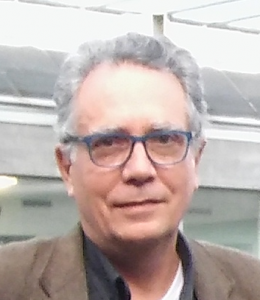 Jaume Veciana (Institut de Ciencia de Materials de Barcelona, ICMAB-CSIC, Spain) is a Full Professor at the Institut de Ciencia de Materials de Barcelona, ICMAB-CSIC, Group Leader at CIBER-BBN, and Scientific Director of the Large Facility ICTS NANBIOSIS. After his PhD, he did a postdoc at The Johns Hopkins University (USA) working on molecular electronics. His current research interest focuses on Molecular Nanoscience, and Nanomedicine. Prof. Veciana co-authored more than 500 journal articles, 16 international patents, and edited two books receiving in 2001 the Solvay Award, in 2004 the Real Sociedad de Quimica Española Award and in 2005 the DuPont Award for his contributions in Molecular Nanoscience.
Jaume Veciana (Institut de Ciencia de Materials de Barcelona, ICMAB-CSIC, Spain) is a Full Professor at the Institut de Ciencia de Materials de Barcelona, ICMAB-CSIC, Group Leader at CIBER-BBN, and Scientific Director of the Large Facility ICTS NANBIOSIS. After his PhD, he did a postdoc at The Johns Hopkins University (USA) working on molecular electronics. His current research interest focuses on Molecular Nanoscience, and Nanomedicine. Prof. Veciana co-authored more than 500 journal articles, 16 international patents, and edited two books receiving in 2001 the Solvay Award, in 2004 the Real Sociedad de Quimica Española Award and in 2005 the DuPont Award for his contributions in Molecular Nanoscience.
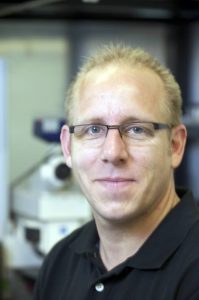 Sven Ingebrandt (University of Applied Sciences Kaiserslautern, Germany) currently holds a professorship of biomedical instrumentation at the University of Applied Sciences Kaiserslautern, Germany. He is head of an interdisciplinary and international research group composed of postdoctoral scientists and Ph.D. students working at the interface between biotechnology, cell biology, nanotechnology, electronics, and microsystem technology. Research topics are cell-sensor coupling, nanoelectronic biosensors, top-down and bottom-up methods for fabrication of MEMS and NEMS devices. Before starting his current position Sven Ingebrandt has served as a member of research groups at the Max-Planck Institute for Polymer Research Mainz, Germany, and at the RIKEN Institute in Wako, Tokyo, Japan. Afterwards Dr. Ingebrandt was building up and served as the group leader of the research groups ‘Cell-Sensor Coupling’ and ‘Biomolecular Sensors’ in the Institute for Bio- and Nanosystems 2 in the area of Bioelectronics at the Research Center Jülich, Germany. Sven Ingebrandt received his Diploma in Physics from the Johannes Gutenberg University Mainz. For his Ph.D. he was working at the Max-Planck Institute for Polymer Research Mainz, Germany, and defended his doctoral thesis in the department of Physical Chemistry at the Johannes Gutenberg University Mainz, Germany. He authored or co-authored more than 90 scientific publications and he is serving as a reviewer and scientific expert for several different journals and funding agencies.
Sven Ingebrandt (University of Applied Sciences Kaiserslautern, Germany) currently holds a professorship of biomedical instrumentation at the University of Applied Sciences Kaiserslautern, Germany. He is head of an interdisciplinary and international research group composed of postdoctoral scientists and Ph.D. students working at the interface between biotechnology, cell biology, nanotechnology, electronics, and microsystem technology. Research topics are cell-sensor coupling, nanoelectronic biosensors, top-down and bottom-up methods for fabrication of MEMS and NEMS devices. Before starting his current position Sven Ingebrandt has served as a member of research groups at the Max-Planck Institute for Polymer Research Mainz, Germany, and at the RIKEN Institute in Wako, Tokyo, Japan. Afterwards Dr. Ingebrandt was building up and served as the group leader of the research groups ‘Cell-Sensor Coupling’ and ‘Biomolecular Sensors’ in the Institute for Bio- and Nanosystems 2 in the area of Bioelectronics at the Research Center Jülich, Germany. Sven Ingebrandt received his Diploma in Physics from the Johannes Gutenberg University Mainz. For his Ph.D. he was working at the Max-Planck Institute for Polymer Research Mainz, Germany, and defended his doctoral thesis in the department of Physical Chemistry at the Johannes Gutenberg University Mainz, Germany. He authored or co-authored more than 90 scientific publications and he is serving as a reviewer and scientific expert for several different journals and funding agencies.
 Sergio Martinoia (University of Genova, Italy) received the Laurea degree in Electronic Engineering from the University of Genova, Italy, in 1989 and the PhD in Bioengineering from the Politecnico of Milano and University of Genova in 1993. He was visiting student (1991) and visiting scientist (1997) at Stanford University working with the group of Prof. G. Kovacs at the Center of Integrated Systems (CIS). From 2007 to 2013 he was working at the University of Genova and also collaborating as senior scientist at the Dept. of Neurosciences and Brain technologies (NBT) of the Italian Institute of Technology (IIT). He is now full professor of Bioengineering at the Dept. of Informatics, Bioengineering, Robotics and Systems Engineering (DIBRIS) where he teaches Bioelectronics, Neuroengineering and Neurotechnologies. He was chairman (2012-2015) of the PhD program in Bioengineering and Robotics, and the founder of the Summer school of Neuroengineering “Massimo Grattarola” held periodically in Genova. He has greatly contributed to the introduction of new enabling technologies in the field of biosensing and in-vitro network electrophysiology proposing new solutions in the field of MEA-based systems and in-vitro neuro-electronic interfaces. His main research interests are focused on: neuroengineering, neurotechnologies, network electrophysiology and computational neuroscience. On the above topics he co-authored more than 100 publications on international refereed journals.
Sergio Martinoia (University of Genova, Italy) received the Laurea degree in Electronic Engineering from the University of Genova, Italy, in 1989 and the PhD in Bioengineering from the Politecnico of Milano and University of Genova in 1993. He was visiting student (1991) and visiting scientist (1997) at Stanford University working with the group of Prof. G. Kovacs at the Center of Integrated Systems (CIS). From 2007 to 2013 he was working at the University of Genova and also collaborating as senior scientist at the Dept. of Neurosciences and Brain technologies (NBT) of the Italian Institute of Technology (IIT). He is now full professor of Bioengineering at the Dept. of Informatics, Bioengineering, Robotics and Systems Engineering (DIBRIS) where he teaches Bioelectronics, Neuroengineering and Neurotechnologies. He was chairman (2012-2015) of the PhD program in Bioengineering and Robotics, and the founder of the Summer school of Neuroengineering “Massimo Grattarola” held periodically in Genova. He has greatly contributed to the introduction of new enabling technologies in the field of biosensing and in-vitro network electrophysiology proposing new solutions in the field of MEA-based systems and in-vitro neuro-electronic interfaces. His main research interests are focused on: neuroengineering, neurotechnologies, network electrophysiology and computational neuroscience. On the above topics he co-authored more than 100 publications on international refereed journals.
 Mihai Irimia-Vladu (Joanneum Research Forschungsgesellschaft mbH, Weiz, Austria) received the Laurea degree in Mechanical Engineering from the University of of Craiova, Romania, in 1997. From 2000 to 2006 he was working as research and teaching assistant at Materials Engineering Department of the Auburn University (Alabama, USA). In 2006, he received the PhD in Materials Engineering from the Auburn University, Alabama, USA. From 2006 to 2012 he was a post-doctoral research scientist at the Johannes Kepler University (Prof. Siegfried Bauer), Linz, Austria. Since 2012, he is as senior scientist (permanent position) at the Institute for Surface Technologies and Photonics, Department of Materials of the Joanneum Research Forschungsgesellschaft mbH, Weiz, Austria. He has 1596 citations and an h-index of 105 (Goolge Scholar).
Mihai Irimia-Vladu (Joanneum Research Forschungsgesellschaft mbH, Weiz, Austria) received the Laurea degree in Mechanical Engineering from the University of of Craiova, Romania, in 1997. From 2000 to 2006 he was working as research and teaching assistant at Materials Engineering Department of the Auburn University (Alabama, USA). In 2006, he received the PhD in Materials Engineering from the Auburn University, Alabama, USA. From 2006 to 2012 he was a post-doctoral research scientist at the Johannes Kepler University (Prof. Siegfried Bauer), Linz, Austria. Since 2012, he is as senior scientist (permanent position) at the Institute for Surface Technologies and Photonics, Department of Materials of the Joanneum Research Forschungsgesellschaft mbH, Weiz, Austria. He has 1596 citations and an h-index of 105 (Goolge Scholar).
 Michele Muccini (CNR-ISMN, Rome, Italy) is Director of CNR-ISMN, President of the CNR Research Area Roma1 and of the public-private Industrial Consortium MIST E-R. He is co-founder of a start-up company focused on the development of organic light emitting technologies. Muccini is inventor of the OLET, the organic electroluminescent transistor and of the OCST, an organic sensor for the stimulation, and recording of neural networks. He is Curator and Organizer of TEDxCNR (www.tedxcnr.com) the first global communication event of CNR on TED (Technology Entertainment Design –www.ted.com) platform. Muccini is author of more than 200 scientific publications in international journals and inventor of 20 international patents related to advanced materials and functional devices. Email: michele,muccini@cnr.it, Web: www.ismn.cnr.it, www.linkedin.com/in/michele-muccini-494b7720, https://twitter.com/muccinim
Michele Muccini (CNR-ISMN, Rome, Italy) is Director of CNR-ISMN, President of the CNR Research Area Roma1 and of the public-private Industrial Consortium MIST E-R. He is co-founder of a start-up company focused on the development of organic light emitting technologies. Muccini is inventor of the OLET, the organic electroluminescent transistor and of the OCST, an organic sensor for the stimulation, and recording of neural networks. He is Curator and Organizer of TEDxCNR (www.tedxcnr.com) the first global communication event of CNR on TED (Technology Entertainment Design –www.ted.com) platform. Muccini is author of more than 200 scientific publications in international journals and inventor of 20 international patents related to advanced materials and functional devices. Email: michele,muccini@cnr.it, Web: www.ismn.cnr.it, www.linkedin.com/in/michele-muccini-494b7720, https://twitter.com/muccinim
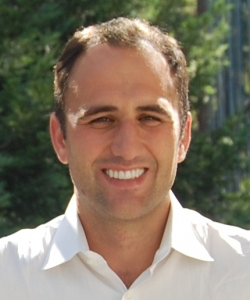 Marco Rolandi (University of Santa Cruz, California) is an Associate Professor of Electrical Engineering at the University of California, Santa Cruz. He is also co- founder of KitoTech Medical (2012) and Cruz Foam (2017). Prior to joining UCSC, Marco was an Assistant (2008-2014) and Associate Professor (2014-2015) of Materials Science and Engineering at the University of Washington (Seattle). His research focuses on bioelectronic systems and devices, biological materials, and their translational applications. His work on bioprotonic transistors was highlighted in The New York Times, New Scientist, MRS 360, IEEE Spectrum, Materials Views, Engadget, Popular Science, and several others. His work on shark’s electrosensors was highlighted in The Washington Post, Popular Science, Motherboard, Physics World, and it was on the front page of Reddit. He is also interested in visual communication in science and engineering and his essay on how to prepare scientific figures was the most downloaded article in Advanced Materials during the fall of 2011 (> 10,000 times). He received a 3M Untenured Faculty Award (2010), an NSF-CAREER award (2012), and was selected as one of the TR-35 GI by the MIT Technology Review (Italy, 2012).
Marco Rolandi (University of Santa Cruz, California) is an Associate Professor of Electrical Engineering at the University of California, Santa Cruz. He is also co- founder of KitoTech Medical (2012) and Cruz Foam (2017). Prior to joining UCSC, Marco was an Assistant (2008-2014) and Associate Professor (2014-2015) of Materials Science and Engineering at the University of Washington (Seattle). His research focuses on bioelectronic systems and devices, biological materials, and their translational applications. His work on bioprotonic transistors was highlighted in The New York Times, New Scientist, MRS 360, IEEE Spectrum, Materials Views, Engadget, Popular Science, and several others. His work on shark’s electrosensors was highlighted in The Washington Post, Popular Science, Motherboard, Physics World, and it was on the front page of Reddit. He is also interested in visual communication in science and engineering and his essay on how to prepare scientific figures was the most downloaded article in Advanced Materials during the fall of 2011 (> 10,000 times). He received a 3M Untenured Faculty Award (2010), an NSF-CAREER award (2012), and was selected as one of the TR-35 GI by the MIT Technology Review (Italy, 2012).
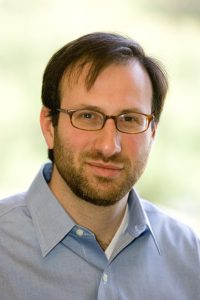 Alberto Salleo (Stanford University, California) is currently an Associate Professor of Materials Science at Stanford University. Alberto Salleo graduated as a Fulbright Fellow with a PhD in Materials Science from UC Berkeley in 2001. From 2001 to 2005 Salleo was first post-doctoral research fellow and successively member of research staff at Xerox Palo Alto Research Center. In 2005 Salleo joined the Materials Science and Engineering Department at Stanford as an Assistant Professor and was promoted to Associate Professor in 2013. Salleo is a Principal Editor of MRS Communications since 2011. He has published over 170 peer-reviewed articles, co-authored 8 book chapters and co-edited a book on flexible electronics. While at Stanford, Salleo won the NSF Career Award, the 3M Untenured Faculty Award, the SPIE Early Career Award and the Tau Beta Pi Excellence in Undergraduate Teaching Award and the Gores Award for Excellence in Teaching, Stanford’s highest teaching honor.
Alberto Salleo (Stanford University, California) is currently an Associate Professor of Materials Science at Stanford University. Alberto Salleo graduated as a Fulbright Fellow with a PhD in Materials Science from UC Berkeley in 2001. From 2001 to 2005 Salleo was first post-doctoral research fellow and successively member of research staff at Xerox Palo Alto Research Center. In 2005 Salleo joined the Materials Science and Engineering Department at Stanford as an Assistant Professor and was promoted to Associate Professor in 2013. Salleo is a Principal Editor of MRS Communications since 2011. He has published over 170 peer-reviewed articles, co-authored 8 book chapters and co-edited a book on flexible electronics. While at Stanford, Salleo won the NSF Career Award, the 3M Untenured Faculty Award, the SPIE Early Career Award and the Tau Beta Pi Excellence in Undergraduate Teaching Award and the Gores Award for Excellence in Teaching, Stanford’s highest teaching honor.
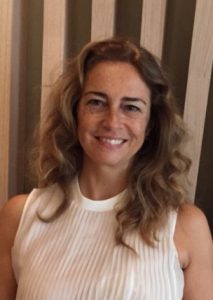 Beatrice Fraboni (University of Bologna, Italy) holds a Master in Microelectronics (University of Cambridge, UK) and a PhD in Physics (University of Bologna, IT), Since 2000 at the Department of Physics and Astronomy of the University of Bologna, where she presently is Associate Professor. She presently serves as the Rector’s Delegate for International Relations (USA and Europe) of the University of Bologna; is in the Excutive Committee of the “Collegio Superiore” (e.g. the College of Excellence) of UNIBO; is in the Executive Committee of the Physics Doctorate School of UNIBO. She has been awarded the ITWIIN Award 2016 “Best woman inventor of the year” and coordinates several international and national research projects (EC-FP7-ICT “i-FLEXIS (2013-2016); POR-FESR ECOPACKLAB project (2016-2018); MATRICS – INSTM Project (2016-2018)). She published over 130 papers, holds 10 patents and is co-founder of the start-up “Labtrek” (www.labtrek.it). Her research is focused on the study of the electronic transport properties of advanced materials and nano-devices for opto, in particular, on the effects of ionizing radiation (X-rays, gamma-rays,particle irradiation) on semiconducting and semi-insulating materials and sensors.
Beatrice Fraboni (University of Bologna, Italy) holds a Master in Microelectronics (University of Cambridge, UK) and a PhD in Physics (University of Bologna, IT), Since 2000 at the Department of Physics and Astronomy of the University of Bologna, where she presently is Associate Professor. She presently serves as the Rector’s Delegate for International Relations (USA and Europe) of the University of Bologna; is in the Excutive Committee of the “Collegio Superiore” (e.g. the College of Excellence) of UNIBO; is in the Executive Committee of the Physics Doctorate School of UNIBO. She has been awarded the ITWIIN Award 2016 “Best woman inventor of the year” and coordinates several international and national research projects (EC-FP7-ICT “i-FLEXIS (2013-2016); POR-FESR ECOPACKLAB project (2016-2018); MATRICS – INSTM Project (2016-2018)). She published over 130 papers, holds 10 patents and is co-founder of the start-up “Labtrek” (www.labtrek.it). Her research is focused on the study of the electronic transport properties of advanced materials and nano-devices for opto, in particular, on the effects of ionizing radiation (X-rays, gamma-rays,particle irradiation) on semiconducting and semi-insulating materials and sensors.
Emil J.W. List-Kratochvil (Humboldt-Universität zu Berlin) graduated from the Napier University Edinburgh with a first class BSc (Hons) in Applied Physics in 1996, followed by a first class Master Degree in 1998 and a first class degree of a Doctor Technicae in 2000, both from Graz University of Technology (TU Graz). He received his Habilitation (Venia Docendi) in Solid State Physics in 2003 at TU Graz. At that time, he was a Christian-Doppler-Society funded Research Associate (2000-2007), directing a laboratory for “Advanced Functional Materials” focusing on an applied research agenda in collaboration with Austrian Industry. In 2004 he was appointed Associate Professor in Solid State Physics at TU Graz. In 2004 Professor List-Kratochvil was awarded the Fritz Kohlrauschpreis (ÖPG) and the Basic Research Nanotechnology Award (Provice of Styria). In 2006 he got the offer to found the NanoTecCetern Weiz Forschungsgesellschaft mbH, which he directed as Scientific Managing Director until 2015, in parallel to his appointment at TU Graz. In October 2015, he accepted an offer for a Full Professorship in Hybrid Devices from Humboldt-Universität zu Berlin. Professor List-Kratochvil’s research focuses on the physics and application of molecular and hybrid electronic materials. Over the past 15 years he has made important contributions towards a better fundamental understanding of the structure to property relations in conjugated polymers and light emitting dendrimers and their application in (printed) electronic and optoelectronics device, where he has focused on the development of inkjet printing processes and printed light emitting, sensor and memory devices. Professor List-Kratochvil’s contributions to the subject have led to wide-ranging publications and patent applications that address both fundamental and more applied device related topics.
Alessandro Pezzella (University of Naples, Italy) received his Ph.D. in Chemistry in 1997 under the direction of Professor G. Prota at the University of Naples “Federico II”. In 1999 he obtained a degree in Pharmacy and in 2004 a degree in Mathematics. In 1999 he earned a faculty position in the same University as researcher. His research activities focused on the oxidative chemistry of 5,6-dihydroxyindoles, the melanin pigment characterization and the oxidative behaviour of phenolic compounds associated with the molecular mechanisms underlying degenerative pathologies. More recently, in the context of several research projects addressing the applications of bioinspired polymers and heterocyclic compounds in organic electronics and bioelectronics, his research interests have embraced the development of synthetic strategies for substituted indoles and phenolic compounds. Alessandro Pezzella’s current interests centre on the chemistry of eumelanins and their processing within electronic devices as well as their employment as bioinspired interface for cell culture growth and sensing. His research activity has produced over one hundred publications including international and national patents, research papers, reviews, and book chapters.
 Carlo A. Bortolotti (University of Modena and Reggio Emilia, Italy) is an Assistant Professor of Physical Chemistry at the University of Modena and Reggio Emilia. He received his PhD in Chemistry in 2006; from 2006 to 2008 he was a PostDoc at the S3 Centre (now Institute Nanoscience) of the Italian National Research Council (CNR). He has been a visiting fellow at the Brandeis University, Technical University of Denmark DTU, University College London UCL, Harvard Medical School. His main research interests concern he combined experimental and computational design and production of bio-(in)organic interfaces for nanobiotechnological applications.
Carlo A. Bortolotti (University of Modena and Reggio Emilia, Italy) is an Assistant Professor of Physical Chemistry at the University of Modena and Reggio Emilia. He received his PhD in Chemistry in 2006; from 2006 to 2008 he was a PostDoc at the S3 Centre (now Institute Nanoscience) of the Italian National Research Council (CNR). He has been a visiting fellow at the Brandeis University, Technical University of Denmark DTU, University College London UCL, Harvard Medical School. His main research interests concern he combined experimental and computational design and production of bio-(in)organic interfaces for nanobiotechnological applications.
Salvatore Iannotta (IMEM-CNR, Parma, Italy) is the director of CNR Istituto dei Materiali per l’Elettronica ed il Magnetismo (IMEM) and of the BIOGENA-P Center, BIOelectronics GEnomics and NAnomedicine of CNR and University of Parma. He is Professor at the PhD School on Science and Technology of Materials of the University of Parma (since 2009). He has been visiting several research institutes among which the Nanoscale Facility of Cornell University and has been visiting scientist at the Lash Miller Laboratory of the University of Toronto (Ontario–Canada). He has been member of the board of directors of the Bruno Kessler Foundation (FBK) and of scientific/stirring committees of national and International conferences. He is coordinator of several research projects on a national and international basis in the fields of nanostructured, molecular, hybrid materials and systems including their applications to gas and bio-sensing, energy (photovoltaics in particular). He is co-author of more than 150 papers on journals with international editorial boards with more than 3100 citations and he has been invited speaker to more than 50 international conferences. He is also author or co-author of several monographs, among which: “Cluster Beam Synthesis of Nano-structured Materials” – Springer – Berlin (http://link.springer.com/book/10.1007/978-3-642-59899-9). He is promoter of several national, European and international scientific collaborations/initiatives and member of the International Union for Vacuum Science Techniques and Applications (IUVSTA) – Nanostructures Division Committee. He is also member of the board of directors of the Ph. D. Schools: Science and Technology of the University of Parma. Since 2014 he is President of the Panel Energy, Micro- and Nanoelectronics for the evaluation of proposal whitin the MISE-FCS Programme (the Italian Ministry of Economical Developments Programme for Competitive Growth). He has been acting as research proposal reviewer for several international agencies.
 Virgilio Mattoli (Istituto Italiano di Tecnologia, Pontedera, Italy) received his Laurea degree in chemistry cum laude from the University of Pisa and the Diploma in Chemistry from the Scuola Normale Superiore of Pisa in 2000. In 2005 he received his PhD in bio-engineering cum laude from Scuola Superiore Sant’Anna, with a thesis focused on the control and integration of miniaturized devices for environmental application. In 2004 he was visiting researcher at the University of Stanford, Center for Design Research, where he focused his activity on sensors and controls modules for biomimetic robotics applications. In 2005 and 2008 he was a short term visiting researcher at Waseda University (Tokyo, Japan) working on a bio-inspired mini-robot and on development of ultra-conformable polymeric films. From June 2008 to October 2009 he obtained a temporary position of Assistant Professor of bioengineer engineering at the Scuola Superiore Sant’Anna (SSSA). From November 2009 to July 2015, he has been a Team Leader of the Smart Materials Platform in the Center for Micro-BioRobotics @SSSA of the Istituto Italiano di Tecnologia. In August 2015, he obtained a permanent position of Senior Researcher Technologist at the Center for Micro-BioRobotics @SSSA of the Istituto Italiano di Tecnologia. His main research interests include: smart and bio-inspired materials, nanomaterials, ultra-thin polymeric films, thin film sensors, sensor conditioning, miniaturised acquisition system and biorobotics. He is currently involved in several research projects on these topics. He is author or co-author of more than hundred articles on ISI journals, of more than forty full papers published in peer-reviewed international conferences proceedings and of several deposited patents.
Virgilio Mattoli (Istituto Italiano di Tecnologia, Pontedera, Italy) received his Laurea degree in chemistry cum laude from the University of Pisa and the Diploma in Chemistry from the Scuola Normale Superiore of Pisa in 2000. In 2005 he received his PhD in bio-engineering cum laude from Scuola Superiore Sant’Anna, with a thesis focused on the control and integration of miniaturized devices for environmental application. In 2004 he was visiting researcher at the University of Stanford, Center for Design Research, where he focused his activity on sensors and controls modules for biomimetic robotics applications. In 2005 and 2008 he was a short term visiting researcher at Waseda University (Tokyo, Japan) working on a bio-inspired mini-robot and on development of ultra-conformable polymeric films. From June 2008 to October 2009 he obtained a temporary position of Assistant Professor of bioengineer engineering at the Scuola Superiore Sant’Anna (SSSA). From November 2009 to July 2015, he has been a Team Leader of the Smart Materials Platform in the Center for Micro-BioRobotics @SSSA of the Istituto Italiano di Tecnologia. In August 2015, he obtained a permanent position of Senior Researcher Technologist at the Center for Micro-BioRobotics @SSSA of the Istituto Italiano di Tecnologia. His main research interests include: smart and bio-inspired materials, nanomaterials, ultra-thin polymeric films, thin film sensors, sensor conditioning, miniaturised acquisition system and biorobotics. He is currently involved in several research projects on these topics. He is author or co-author of more than hundred articles on ISI journals, of more than forty full papers published in peer-reviewed international conferences proceedings and of several deposited patents.
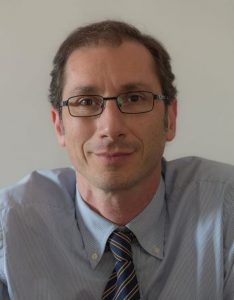 Gianluca Farinola (University of Bari, Italy) is Full Professor of Organic Chemistry at the University of Bari since 2015 and he is presently the President of the Organic Chemistry Division of the Italian Chemical Society (2017-2019). He received his PhD in Chemical Sciences at the University of Bari in 1997 and he was Assistant (1996-2002) and then Associate (2002-2015) Professor of Organic Chemistry at the same University. He was invited visiting professor at the Universities of Muenster (2009), Strasbourg (2013-2014), Angers (2015) and Tufts Boston (2017). He is one of the co-founder of the spin-off company SYNCHIMIA s.r.l. of the University of Bari started in November 2008. In 2016 he acted as consultant of the Italian Parliamentary Committee (Commissione Parlamentare Bicamerale Camera dei Deputati / Senato della Repubblica Italiana) on environmental issues. Gianluca Farinola was awarded the Ciamician Medal of the Italian Chemical Society in 2003 and the CINMPIS Award for Innovation in Organic Synthesis in 2008. He is author of about 150 publications on international peer-reviewed journals, several patents and book chapters. He presented his research in about 100 invited lectures. Gianluca Farinola and his group design and synthesize molecular, polymeric and supramolecular photo/electro-active materials for applications ranging from organic photonics and electronics to biology. Recently he also focused on combination of organic semiconductors with biological molecules and nanostructures, resulting in hybrid materials with intriguing properties.
Gianluca Farinola (University of Bari, Italy) is Full Professor of Organic Chemistry at the University of Bari since 2015 and he is presently the President of the Organic Chemistry Division of the Italian Chemical Society (2017-2019). He received his PhD in Chemical Sciences at the University of Bari in 1997 and he was Assistant (1996-2002) and then Associate (2002-2015) Professor of Organic Chemistry at the same University. He was invited visiting professor at the Universities of Muenster (2009), Strasbourg (2013-2014), Angers (2015) and Tufts Boston (2017). He is one of the co-founder of the spin-off company SYNCHIMIA s.r.l. of the University of Bari started in November 2008. In 2016 he acted as consultant of the Italian Parliamentary Committee (Commissione Parlamentare Bicamerale Camera dei Deputati / Senato della Repubblica Italiana) on environmental issues. Gianluca Farinola was awarded the Ciamician Medal of the Italian Chemical Society in 2003 and the CINMPIS Award for Innovation in Organic Synthesis in 2008. He is author of about 150 publications on international peer-reviewed journals, several patents and book chapters. He presented his research in about 100 invited lectures. Gianluca Farinola and his group design and synthesize molecular, polymeric and supramolecular photo/electro-active materials for applications ranging from organic photonics and electronics to biology. Recently he also focused on combination of organic semiconductors with biological molecules and nanostructures, resulting in hybrid materials with intriguing properties.
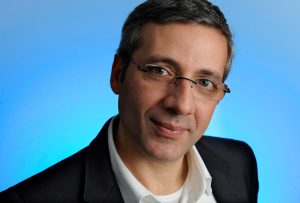 Eugenio Cantatore (Eindhoven University of Technology, Netherlands) received his Master’s and Ph.D. Degree in Electrical Engineering from Politecnico di Bari, in 1993 and 1997 respectively. From 1997 to 1999 he was fellow at the European Laboratory for Particle Physics (CERN), Geneva. In 1999 he moved to Philips Research, Eindhoven, as senior scientist and in 2007 joined the Eindhoven University of Technology, where he is full professor since 2016. His research interests include the design and characterization of electronic circuits exploiting emerging technologies and the design of ultra-low power micro-systems. He authored or co-authored more than 140 papers in journals and conference proceedings, and 13 patents or patent applications. He is active in the Technical Program Committees of IWASI, ESSDERC, ESSCIRC and ISSCC. From 2013 till 2016 he has been chair of the Technology Directions subcommittee, and he is presently Program vice-chair of ISSCC. In 2006 he received from ISSCC the Beatrice Winner Award for Editorial Excellence and was nominated in the Scientific American top 50 list. He received the Philips Research Invention Award in 2007, the Best Paper Award from ESSDERC 2012 and the Distinguished Technical Paper Award from ISSCC 2015. Eugenio Cantatore is a fellow of the IEEE.
Eugenio Cantatore (Eindhoven University of Technology, Netherlands) received his Master’s and Ph.D. Degree in Electrical Engineering from Politecnico di Bari, in 1993 and 1997 respectively. From 1997 to 1999 he was fellow at the European Laboratory for Particle Physics (CERN), Geneva. In 1999 he moved to Philips Research, Eindhoven, as senior scientist and in 2007 joined the Eindhoven University of Technology, where he is full professor since 2016. His research interests include the design and characterization of electronic circuits exploiting emerging technologies and the design of ultra-low power micro-systems. He authored or co-authored more than 140 papers in journals and conference proceedings, and 13 patents or patent applications. He is active in the Technical Program Committees of IWASI, ESSDERC, ESSCIRC and ISSCC. From 2013 till 2016 he has been chair of the Technology Directions subcommittee, and he is presently Program vice-chair of ISSCC. In 2006 he received from ISSCC the Beatrice Winner Award for Editorial Excellence and was nominated in the Scientific American top 50 list. He received the Philips Research Invention Award in 2007, the Best Paper Award from ESSDERC 2012 and the Distinguished Technical Paper Award from ISSCC 2015. Eugenio Cantatore is a fellow of the IEEE.
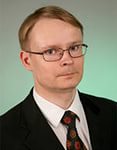 Sergey Ponomarenko (Russian Academy of Sciences (ISPM RAS), Moscow, Russia) graduated from Lomonosov Moscow State University in 1999 with a PhD degree in Polymer Chemistry after having completed a chemistry education at the same university. After two years of Postdoc at Electronic Chemicals Research Labs, Bayer AG & H.C. Starck GmbH, Leverkusen, Germany (2001 – 2003) he joined ISPM RAS as a Senior researcher (2003-2005), Leading researcher (2005-2010) and since 2011 – as a Head of new Laboratory of Functional Materials for Organic Electronics and Photonics at ISPM RAS. In 2010 he received a Doctor of Science Degree in Polymer Chemistry and since 2011 he was elected as a Corresponding member of Russian Academy of Sciences. Since 2012 he is a Professor at Chemistry Department of Lomonosov Moscow State University. He is a co-founder of several start-up companies in the field of organic electronics and photonics. He was the Chair of the International Conference on Organic Electronics ICOE-2017 in St. Petersburg, Russia as well as the 1st – 3rd International Fall School on Organic Electronics IFSOE-2014 – IFSOE-2016 in Moscow Region. He has published >140 papers and >30 issued patents. His research interests encompass organic electronics & photonics, bioelectronics, polymer chemistry, organic functional materials and self-assembly.
Sergey Ponomarenko (Russian Academy of Sciences (ISPM RAS), Moscow, Russia) graduated from Lomonosov Moscow State University in 1999 with a PhD degree in Polymer Chemistry after having completed a chemistry education at the same university. After two years of Postdoc at Electronic Chemicals Research Labs, Bayer AG & H.C. Starck GmbH, Leverkusen, Germany (2001 – 2003) he joined ISPM RAS as a Senior researcher (2003-2005), Leading researcher (2005-2010) and since 2011 – as a Head of new Laboratory of Functional Materials for Organic Electronics and Photonics at ISPM RAS. In 2010 he received a Doctor of Science Degree in Polymer Chemistry and since 2011 he was elected as a Corresponding member of Russian Academy of Sciences. Since 2012 he is a Professor at Chemistry Department of Lomonosov Moscow State University. He is a co-founder of several start-up companies in the field of organic electronics and photonics. He was the Chair of the International Conference on Organic Electronics ICOE-2017 in St. Petersburg, Russia as well as the 1st – 3rd International Fall School on Organic Electronics IFSOE-2014 – IFSOE-2016 in Moscow Region. He has published >140 papers and >30 issued patents. His research interests encompass organic electronics & photonics, bioelectronics, polymer chemistry, organic functional materials and self-assembly.
Fabio Biscarini (University of Modena and Reggio Emilia, Italy)